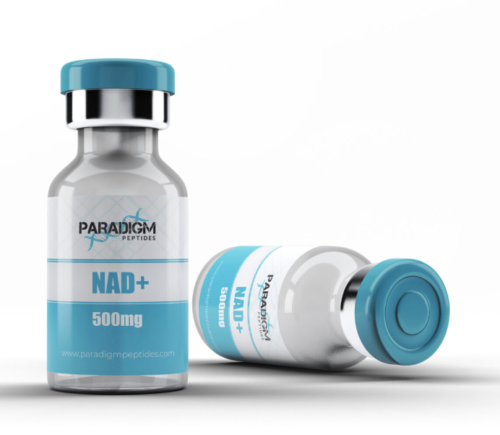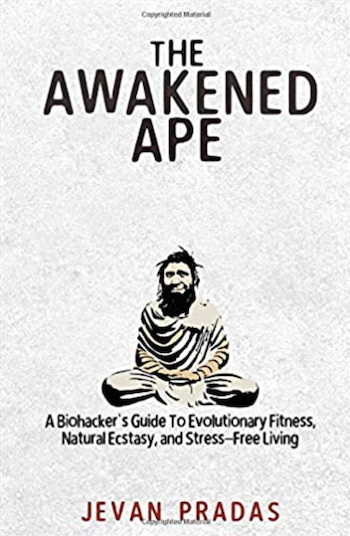Back Pain
Welcome to our page dedicated to back health and the exciting realm of biohacks for improving and managing back pain. Back pain is a common condition that can have a significant impact on our daily lives, affecting our mobility, productivity, and overall well-being.
Whether you experience occasional discomfort or chronic back pain, it’s crucial to explore effective strategies to alleviate pain and promote the health of your back. This is where biohacking comes into play.
Biohacking involves utilizing innovative techniques, lifestyle modifications, and alternative therapies to optimize our body’s natural processes and promote healing. By incorporating biohacks into your daily routine, you can potentially reduce back pain, increase flexibility, strengthen the core muscles, and support overall back health.
In this comprehensive guide, we will delve into various biohacks that have shown promising results in managing back pain and improving back health. From targeted exercises and stretches to posture correction and stress reduction techniques, we will provide you with evidence-based information and practical advice to empower you on your journey towards a healthier back.
It’s important to remember that every individual’s body is unique, and what works for one person may not work for another. Therefore, we recommend consulting with healthcare professionals before implementing any new strategies to ensure they are suitable for your specific needs and condition.
Get ready to explore the world of biohacking and discover effective ways to improve your back health, alleviate pain, and regain your mobility. Together, let’s unlock the potential of biohacks and embark on a journey towards a stronger and pain-free back.
Knowing the many causes of lower back pain is crucial for determining what to change and improve
Here are a few:
- Not doing enough core exercises
- Bad posture
- Sitting with your wallet in your back pocket for long periods of time
- Injury
- A sedentary lifestyle
- Stress, anxiety and depression
- Obesity
- Strenuous physical job or exercise
- Smoking
- Pregnancy
- An office chair without complete lumbar support
Use these simple life hacks for lower back pain treatment if you’re in severe agony. You be advised to contact your general practitioner (GP) right away if the pain persists or gets worse.
Hacks for your back:
If you experience back discomfort, you are aware of how gratifying a brief stretch can be. Stretching enables knotted and stiff muscles to release. Your muscles can loosen up by moving by stretching.
Back stretches can be performed at your desk or even during your lunch break. Just extend your arms above your head and slowly tuck your toes under while inhaling deeply.
Exercise may help to relieve your back pain, provided that your doctor has given you the go-ahead. Your lower back will be relieved of the burden if your leg, stomach, back, and especially your core muscles are strengthened. Exercises for lower back pain will also target the trouble spots, strengthening and extending your back muscles. A little bit of exercise keeps your body flexible by reducing muscle tension and inflammation.
You need to choose a chair with complete back support if you spend a lot of time working in front of a computer. Demand a cozy office chair with lumbar support and height- and backrest-adjustable features.
People’s postures are suffering in the current society. All of us slouch and stoop because we’re constantly checking our phones and using computers. Naturally, this puts a strain on the muscles in your back.
Consider your posture, breathing, and even the way you stand. Try to sit upright on your office chair while maintaining a straight forward gaze. If the screen on your computer is too low, it helps to place the monitor on a pile of books. Try to limit your mobile use during the day and gaze up more often than down. Lastly, take a deep breath in via your stomach rather than your chest. This strengthens your abdominal muscles and enables you to sit or stand up straight.
You can avoid a lot of pain by lifting big objects correctly. Avoid bending over when lifting; instead, bend at the knees and, if necessary, squat. Keep your abdominal muscles engaged when picking up the object and bring it as near to your body as you can. The object may be raised using your legs and knees.
A heating pad is a miracle cure for lower back discomfort. Use a warm water bottle or heating pad and place it on the painful spot for around 20 minutes as soon as you begin to experience pain.
The tension on your back muscles can be lessened by strengthening your abdominal muscles, even if there are other things you’d rather do. When your abdominals are weak, your back has to work harder to compensate for the weakness in your core. If you strengthen your core muscles, your back muscles probably won’t have to work as hard to do the same tasks.
Consistent back pain is a solid reason to give yoga a try if you’re still on the fence about it. Back muscles can benefit greatly from the mix of improving flexibility and muscle strengthening found in most yoga programs. Moreover, mindfulness practices like meditation and deep breathing can assist to relax the mind, which in turn leads to a more relaxed reaction to bodily tension and discomfort.
It’s probably time to start looking for a new mattress if you’ve owned your current one for 5 to 7 years. There are many options available as well as some helpful advice for choosing the best mattress for your body type. Finding a mattress that is supportive, firm, and neither too soft nor too hard may put undue strain on your body. Good pillows are required for decent mattresses. Choose a pillow that will fit your body type after determining what kind of sleeper you are.
While heels may look fantastic on your legs, they are terrible for your back. Because of the increased height, the chest, hips, and lower back are forced forward, which tightens and cramps the muscles in the back of the body. You’ll probably feel better if you wear flats at least a few days a week instead of heels.
Swimming is a terrific technique to workout without worrying about aggravating or hurting your already weakened back because of the weightlessness and lack of pressure on your joints and muscles. If swimming is too strenuous for you, take a seat in a whirlpool and direct the jets at the sore areas. Tension will be reduced and muscles will relax thanks to the warmth of the water and the pulsing of the jets.
The strain of carrying extra weight affects several body regions, including the back. Your spine and the muscles in your back will eventually become strained if you ask your back to carry excessive weight all day. Consider strategies to increase your daily activity, or look for healthier eating options at home or at work.
Try applying an ice pack directly to the area of discomfort if you discover that swelling or inflammation is a bigger problem for you. Are tight, restricted muscles the issue? Take the heat. Make sure to use moist heat, such as a warm compress, as opposed to dry heat, such as a heating pad, which can drain moisture from the skin and exacerbate the problem.
For fear of aggravating their back pain, many persons with it refrain from exercising. While it is true that high-impact activities can be taxing on the joints and aggravate pain, exercising helps you develop a stronger core and lose excess weight, both of which are essential in minimizing back discomfort. Almost every activity may be altered to provide an equally effective workout without the impact! There are low-impact variations of even traditionally high-impact exercises like jumping jacks and burpees.
Hold your arms at your sides while standing straight to perform a modified jumping jack. When raising your arms above your head, step your right foot out to the side. Start by bringing your right leg back; then, as soon as you do, bring your left foot out to the side. With no break in between, switch back and forth. Here are some more low-impact workouts you may incorporate into your schedule.
While having a desk job may be out of your control, you don’t have to stay inactive the entire time. Even sitting exercises like reverse jack knives let you to develop your core without getting up from your chair. Simply lean back a little while sitting on the edge of your chair, keeping your chest up. Stretch your legs out in front of you and engage your core while you hold the edges of your chair for support. Tighten your knees, then stretch them straight. Ten times in total.
****IMAGE IN DOC****
Stretching the back muscles that become stiff from sitting and performing daily tasks is a simple technique to avoid pain. Another simple posture to perform at your desk while attending a conference or when you need a one-minute break is the child’s pose.
Make sure your upper thighs are supported by the chair while you sit on the edge of the seat. Set up your body so that your feet are hip-width apart from your knees. Let your torso to hang over your legs as you lean forward. As you stand, let your hands and arms naturally land on each side of your feet. To relieve tension in the neck, shoulders, and back, relax your head and neck. Keep your breathing normal and steady, and keep your spine rounded. 5 calm, deep breaths should be held.
The hamstrings, hip flexors, and spinal erector muscles are among the muscles that are used when walking. Every hour, stand up and take a short walk around the house or office to avoid being sedentary and sitting all day. Moreover, I strongly advise taking a lengthier 30-minute stroll during your lunch break. By reducing the agitation in the joints caused by standing still for extended periods of time, walking can significantly reduce low-back pain. Also, it’s a fantastic mood and energy booster at work!
You didn’t know that as you sleep, you could be harming your back, did you? It is real. The way we sleep might also put stress on the low back. Fortunately, attempting this comfortable sleeping position and getting an extra pillow can help. While lying on your side, put a pillow such that it stretches down your legs between your knees and calves. In addition to easing low back discomfort, this position helps to preserve appropriate spinal alignment.
A sedentary lifestyle can shorten and stiffen the hip flexors, which can pull on the low back and hurt. Combating hip and back discomfort can be much improved by making it a daily habit to get up from your desk and stretch. Try low lunges, the figure four, and bridge posture as terrific hip stretches. To further release the hips, perform extra stretches.
Engage your abs, as these are the muscles that help support the back muscles. To properly engage the abs, pretend that you’re pulling your belly button away from a sharp object, in toward the spine. This causes the transverse abdominis, the deepest ab muscle, to turn on. This can be done whether you’re standing, sitting, reaching for something out of a cupboard, squatting down or playing with your kids. Engage this abdominal muscle whenever you can, regardless of what you’re doing, in order to train your body to utilize your core properly in everyday movements and take pressure off of your low back.
BEST EXERCISES TO COUNTER LOWER BACK PAIN
Place your feet shoulder-width apart as you stand. Straighten your spine. Tall and lovely. You might get some quick alleviation. Put your left hand’s fingertips on your right shoulder. Activate your center. Turn your head and body slowly to the right. Stop moving if doing so causes you pain. If not, stretch to your right side while extending your right arm outward. From side to side, repeat the exercise fully conscious.
The shoulder blade squeeze is a simple exercise that can be done to help improve posture and reduce tension in the upper back and neck. Here’s how to do it:
- Sit or stand with your back straight and your shoulders relaxed.
- Gently draw your shoulder blades back and down towards your spine.
- Hold this position for 5-10 seconds, then release and repeat.
It’s important to keep your shoulders relaxed throughout the exercise and not to tense up your neck or upper back. You can do this exercise several times a day to help improve your posture and reduce tension in your upper back and neck.
Lay down on your back. Activate your center. Gently lift one leg, reaching to cradle it against your chest. Don’t do anything if it seems too much. If it feels comfortable, carefully lower your leg back to the ground and perform the exercise again on the opposite side. Keep your core tight, don’t forget. For a deeper hip flexor stretch, perform this exercise with the lower leg bent or straight.
Here we go if you did Knee-to-Chest 1 well and feel like trying a variant. Place the heel of the opposing leg over the knee before raising the knee to your chest. You should feel a stretch in your glute and outer hip when you pull the leg in. Keep your core active once more. To protect your knee and concentrate the stretch on your hip, keep your foot flexed. If your knees start to hurt in any way, stop.
Cat-Cow is a yoga pose that involves moving your spine through a range of flexion and extension. Here are the steps to perform the Cat-Cow pose:
- Start on your hands and knees, with your wrists directly under your shoulders and your knees directly under your hips.
- As you inhale, arch your back, lifting your tailbone and head towards the ceiling. Allow your belly to sink towards the floor.
- As you exhale, round your spine, tucking your chin towards your chest and bringing your tailbone towards your knees.
- Repeat this movement, inhaling as you arch your back and exhaling as you round your spine.
You can perform Cat-Cow pose several times in a row, moving slowly and mindfully with your breath. This pose helps to stretch and mobilize your spine, while also opening up your chest and shoulders.
Knees bent, feet flat on the ground, lie on your back. Engage your core and raise your head just a little. Try now to move your head ever-so-slightly toward your knees by contracting your abdominals. Here, you’re not trying to fully sit up; rather, you’re merely raising your arms to create some engagement and back relief.
The 45-degree forward fold is a yoga pose that stretches the hamstrings, calves, and lower back. Here’s how to perform it:
- Start in a standing position with your feet hip-distance apart.
- Inhale and raise your arms up above your head.
- As you exhale, hinge forward at your hips and fold your upper body down towards the ground.
- Stop when your torso is at a 45-degree angle to the ground, keeping your knees slightly bent if necessary.
- Allow your arms to hang down towards the floor, or place your hands on your shins or thighs for support.
- Hold this position for several breaths, feeling the stretch in the back of your legs and lower back.
- To come out of the pose, inhale and slowly lift your torso back up to a standing position.
It’s important to maintain a straight spine and avoid rounding your back in this pose. You can also modify the pose by placing your hands on blocks or a chair if you have difficulty reaching the floor.
The bridge pose, also known as Setu Bandhasana in yoga, is a great exercise to strengthen the glutes, hamstrings, and lower back. Here’s how to perform it:
- Lie on your back with your knees bent and your feet flat on the ground, hip-distance apart. Your arms should be extended alongside your body, with your palms facing down.
- Inhale and lift your hips off the ground, pressing your feet and arms into the floor.
- Keep your knees directly over your ankles, and press your chest towards your chin, keeping your chin slightly tucked in.
- Squeeze your glutes and engage your core as you lift your hips as high as you can comfortably go.
- Hold the pose for several breaths, focusing on your breath and maintaining stability.
- To release the pose, slowly lower your hips back down to the ground, vertebra by vertebra.
If you find it challenging to lift your hips high, you can place a block or bolster under your sacrum for support. You can also clasp your hands together under your back to deepen the stretch in your chest and shoulders.
Products that may improve back pain:











